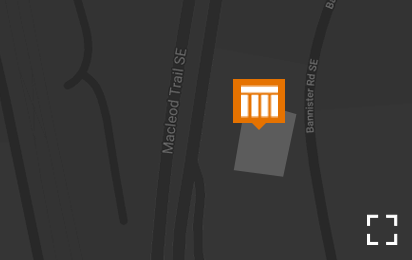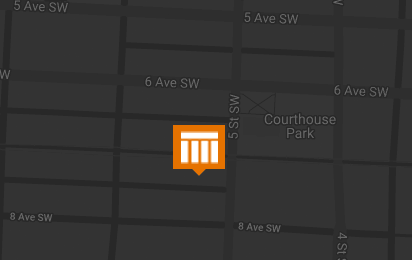Publication
Personal Injury at the Ski Resort - Who's Responsible?
Personal Injury at the Ski Resort - Who's Responsible?
Winter - the time of year when many Albertans venture to the mountains to ski, snowboard and enjoy the outdoors. Recreational activity in the mountains can be inherently dangerous, and may give rise to hundreds of personal injury claims.
But what actually happens if you are injured on the slopes?
Can you bring a personal injury claim against the ski resort operator?
Pursuant to Alberta’s Occupier’s Liability Act, RSA 2000 c O-4 (the “Act”), ski resort operators owe a duty of care to patrons to ensure they will be reasonably safe in using the ski hill for the purposes for which they’re permitted to be there. However, ski resort operators have brought in a number of protective measures to limit their exposure to personal injury claims.
1. Signed waiver agreements
The duty of care owed by ski resort operators to patrons does not apply to risks willingly accepted by the patron. Section 7 of the Act is a codification of the defence of volenti non fit injuria, or voluntary assumption of risk, which acts as a complete bar to a plaintiff’s case. The defence of voluntary assumption of risk is based on the moral idea that no wrong is done to one who consents. By agreeing to assume the risk, the plaintiff pardons the defendant of all responsibility for it.
Furthermore, the duty of care owed by the ski resort operators can be “extended, restricted, modified or excluded by express agreement or express notice” (Section 8, Act). These provisions of the Act are statutory authority that permit ski resort operators to rely on waivers to avoid liability.
The Supreme Court of Canada has explained that for a waiver to be valid, the waiver must be specifically applicable to the circumstances, be “consistent with public policy” and refrain from being “unconscionable” (Tercon Contractors Ltd. v. B.C. Transportation and Highways, 2010 SCC 4).
Case law has overwhelmingly held that ski resort waivers meet the validity inquiry. In fact, some Alberta cases have held that simply the inclusion of the word “negligence” in a waiver may be enough to ensure that the waiver applies to the circumstances (Van Hooydonk v Jonker, 2009 ABQB 8 at paras 38- 39, per Acton J).
2. Challenging the applicability of waivers
Given the ease that waivers seem to pass the scrutiny of courts, the applicability of a waiver may still be challenged on the grounds that the ski resort operator did not bring its existence sufficiently to the notice of the patron, with the result that the patron cannot be taken to have agreed to the exclusion of liability clause.
In the leading Supreme Court of Canada case Crocker v Sundance, [1988] 1 SCR 1186, the plaintiff was rendered quadriplegic after participating in a tubing competition held at the defendant’s ski resort. The plaintiff was severely intoxicated before signing the waiver but was still permitted to participate. The defendant resort attempted to rely on the signed waiver to plead the defence of voluntary assumption of risk.
The Court concluded that the defendant was unable to rely on the waiver since the waiver and its onerous terms were not brought to the attention of the plaintiff. The Court found it impossible to conclude that the plaintiff voluntarily absolved the resort of legal liability. In his intoxicated state, the plaintiff believed he was merely signing an application form. Justice McLachlin (as she was at the time) clarified the law in Karroll v Silver Star Mountain Resorts Ltd. (1988), 33 BCLR (2d) 160 (SC) at 166, and held that there is no general requirement to take reasonable steps to ensure the party signing the waiver reads and understands its terms. The party is bound to the contract whether they read or understand it, unless special circumstances exist so that a reasonable person would know the person signing the waiver is not consenting to its terms.
3. Waivers printed on lift tickets and signage
Apart from signed waiver agreements, ski resorts may also rely on waivers printed on ski lift tickets and signage posted on the premises. Courts have found this sufficient where the ski resort has taken reasonable steps to bring the exclusion of liability to the patron’s attention.
For instance, in a recent Alberta case, the plaintiff was injured by a fall from a lift at a ski facility operated by the defendants. The plaintiff did not sign a waiver, but the ski lift ticket outlined terms of the exclusion of liability and the waiver was posted on signs throughout the premises. The Court explained that as long as reasonable steps are taken to alert a visitor to the waiver terms, a ski resort operator can rely on the unsigned release. However, whether reasonable steps are sufficient will always be fact specific. If the Court is not satisfied that the patron should have reasonably seen the exclusionary language, the defendant will not be able to rely on the exclusion of liability.
Conclusion
Given the state of the law in Alberta, most ski resorts will be diligent in securing well-worded waivers and clearly worded notices on lift tickets and signs. With that, most plaintiffs’ claims for personal injury against a ski resort will be met with a summary judgment application in Court.
Stay safe on the slopes this season. Wear a helmet, be aware of other skiers, and ski and snowboard according to your skill level.
And remember, whether you have a claim against a ski resort operator will be fact specific and should be subject to analysis by a lawyer. In any case, a preclusion of a claim against the ski resort operator does not necessarily bar your claim against other potential defendants.

